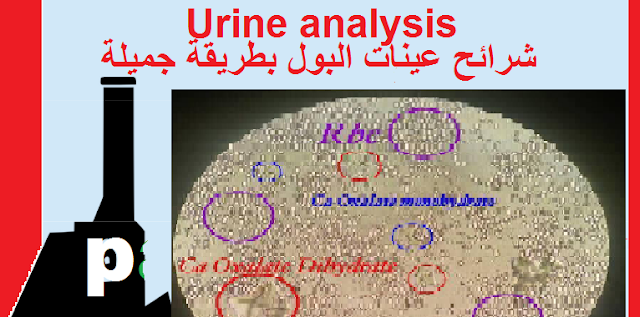Urine Clarity
The word clarity is used to describe the transparency of the urine specimen. A normal urine specimen will be clear when examined in a clear container. The color and the clarity of the specimen are usually evaluated at the same time. As was explained in the section Urine Color, the terms used to describe urine clarity need to be standardized within a laboratory. Common descriptive terms used include
(clear,hazy, cloudy, or turbid)
Image shows the difference in specimen urine clarity
(clear,hazy, cloudy, or turbid)
Image shows the difference in specimen urine clarity
When evaluating urine clarity, it can be helpful to use an object or print behind the specimen the visibility of the object or print when viewed through the urine specimen will help to determine the clarity that should be reported. Common terms used to describe urine clarity and their clinical significance are listed here
Clear
A clear specimen has no visible particles and is transparent. Most normal urine specimens appear clear.
A clear specimen has no visible particles and is transparent. Most normal urine specimens appear clear.
Hazy
Hazy specimens may have a few particles floating in the specimen and are not completely transparent. However, it is still relatively easy to see through a hazy specimen. Mucus and other cellular elements may cause the urine to appear hazy.
Hazy specimens may have a few particles floating in the specimen and are not completely transparent. However, it is still relatively easy to see through a hazy specimen. Mucus and other cellular elements may cause the urine to appear hazy.
Cloudy or turbid
A cloudy specimen will be difficult to see through because of the particles that are suspended in the specimen. Recently voided specimens may appear cloudy because of pyuria (the presence of white blood cells or pus), bacteria, mucus, red blood cells, sperm, yeast, or casts in the specimen.
Fat particles suspended in the urine specimen will cause it to be excessively cloudy. Contamination caused by vaginal creams may also cause the urine specimen to appear cloudy. In addition, specimens that have been allowed to stand at room temperature for extended periods of time may develop a cloudy appearance because of the increase in the number of bacteria present in the specimen. Refrigerated specimens may also become cloudy; this is due to the presence of urates and phosphates in the urine specimen. When the specimen is allowed to cool, these waste products become visible as diffuse (amorphous) particles throughout the specimen, known as amorphous urates or amorphous phosphates.Amorphous urates are present in acidic urine, and may cause the cloudy urine to appear slightly pink. If there are so many amorphous urates present that the specimen cannot be viewed under the microscope, the urine can be warmed to 60°C to clear the urine. Alkaline urine will result in the formation of amorphous phosphates, with a white, cloudy appearance. The amorphous phosphates can be cleared from the specimen if needed for microscopic examination by adding a drop of acetic acid to the specimen.
A cloudy specimen will be difficult to see through because of the particles that are suspended in the specimen. Recently voided specimens may appear cloudy because of pyuria (the presence of white blood cells or pus), bacteria, mucus, red blood cells, sperm, yeast, or casts in the specimen.
Fat particles suspended in the urine specimen will cause it to be excessively cloudy. Contamination caused by vaginal creams may also cause the urine specimen to appear cloudy. In addition, specimens that have been allowed to stand at room temperature for extended periods of time may develop a cloudy appearance because of the increase in the number of bacteria present in the specimen. Refrigerated specimens may also become cloudy; this is due to the presence of urates and phosphates in the urine specimen. When the specimen is allowed to cool, these waste products become visible as diffuse (amorphous) particles throughout the specimen, known as amorphous urates or amorphous phosphates.Amorphous urates are present in acidic urine, and may cause the cloudy urine to appear slightly pink. If there are so many amorphous urates present that the specimen cannot be viewed under the microscope, the urine can be warmed to 60°C to clear the urine. Alkaline urine will result in the formation of amorphous phosphates, with a white, cloudy appearance. The amorphous phosphates can be cleared from the specimen if needed for microscopic examination by adding a drop of acetic acid to the specimen.
Urine clarity provides clues concerning the type and number of formed elements present in the specimen. A cloudy specimen has a high concentration of formed elements, whereas a clear specimen usually has a low concentration. The chemical analysis and microscopic examination provide additional information about any chemicals or structures present in the specimen. A clear urine specimen is not always normal, as there may be abnormal chemical constituents present that don’t cause the urine to appear abnormally cloudy.
You can see urine color from here
urine color
You can see urine color from here
urine color









